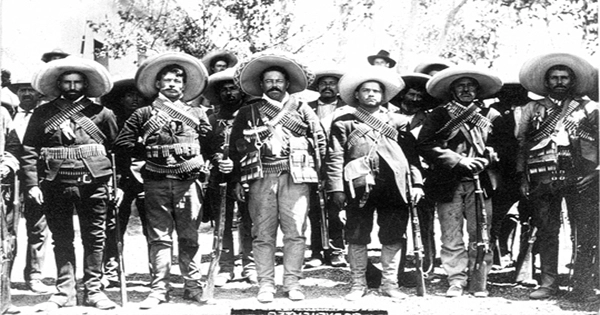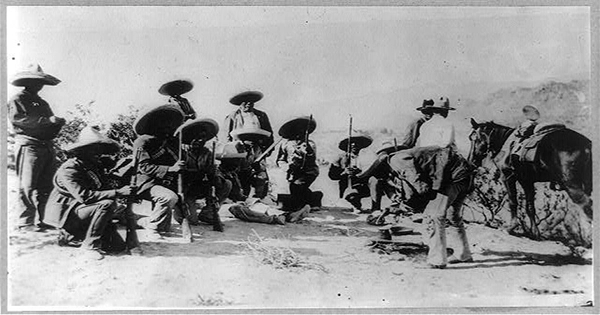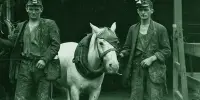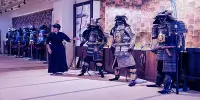Pancho Villa was without a doubt one of the most popular leaders of the Mexican Revolution. He emerged from poverty to become a fierce military leader and a symbol of resistance to injustice after being born into a modest sharecropping family. His epic achievements on the battlefield, including battles against hundreds of American forces, and his unwavering quest for social justice made him a folk hero and a national symbol in Mexico.
Pancho Villa’s early life
On June 5, 1878, in San Juan del Rio, Mexico, Francisco “Pancho” Villa was born José Doroteo Arango Arámbula. His childhood was unremarkable. He attended local schools on occasion but spent the majority of his time working as a sharecropper with his family. He performed more of this after his father died, in addition to working as a mason, railway foreman, butcher, and muleskinner.
Arámbula chose to make his own way in the world when he was 16 years old and relocated to Chihuahua. According to several reports, this did not endure long. He came to his birthplace to get revenge after learning that a ranch owner called Agustn López Negrete had attacked his sister.

He allegedly killed the man, stole his horse, and went on the run under the alias “Arango.” In 1898 and 1902, he was arrested for theft. Despite the fact that he should have been executed, his tight links with influential people saved his life. Arámbula was instead compelled to join the Federal Army. This “career” did not last long, since he murdered one of his officers, took his horse, and resigned from his job.
Taking on the role of Pancho Villa
José Doroteo Arango Arámbula was wanted by the law once more, so he took the name Francisco “Pancho” Villa. He remained a bandit for several years before being persuaded to join the cause of Francisco Madero, who was seeking to topple President Porfirio Daz.
The Mexican Revolution thus began, with Villa acting as a bandit leader supporting Madero’s revolt.
Villa quickly established himself as a formidable and charming commander, capturing a train of Federal Army soldiers, the city of San Andrés, and a property. He was victorious in fights at Naica, Camargo, Pilar de Conchos, and Tecolote.
Villa was tasked by Madero with “dealing with” members of the Mexican Liberal Party. After completing this, he was promoted to the rank of colonel in the revolutionary force.
Another coup d’etat
In 1911, Francisco Madero was elected president, but a settlement to Mexico’s unrest remained a long way off. Under Pascual Orozco’s leadership, more revolutionaries emerged, and Pancho Villa consented to continue fighting for the new president.
Madero was assassinated soon after, allegedly by his own military commander, Gen. Victoriano Huerta, who took over the administration. Villa, who had a strained relationship with the military officer, planned to fight him. Despite originally disagreeing with Madero’s choice to appoint the man as Mexico’s Minister of War, he served in the Constitutionalist Army of Mexico under the command of Venustiano Carranza.
Villa, on the other hand, proved to be too much of a threat to Carranza, as his wartime skill earned him the position of provisional governor of Chihuahua in 1913. He was given orders to spearhead an attack on the town of Zacatecas in order to get him away from Mexico City so that Carranza could establish himself as the new Mexican leader.
Concerned that he would become a tyrant, Villa, and Gen. Emiliano Zapata turned their forces against Carranza instead.
Guerrilla leader
In the years since, the pair’s armies have clashed with those of Venustiano Carranza, led by expert strategist Alvaro Obregón. Following numerous engagements, Pancho Villa’s troops had shrunk to around 200 soldiers by 1915. Around the same time, the United States declared its support for Carranza as Mexico’s leader.
Despite having few men, Villa reacted on March 9, 1916, by assaulting the American town of Columbus, New Mexico. This, along with the earlier massacre of 17 Americans in Santa Isabel, caused US President Woodrow Wilson to send an expedition over the border, led by Gen. John J. Pershing, to arrest Villa.
Despite their best efforts, the Americans were unable to locate Villa due to his superior knowledge of the area. He also received help from locals who admired him. He was well-known for his genuine concern for the destitute, regularly providing them with goods and food when he could.
Villa eluded capture for over 11 months after the US departed from Mexico. While Pershing declared the trip a success, Wilson publicly stated the opposite.
Pancho Villa’s death and legacy
Pancho Villa continued to carry out small-scale operations until 1920. Things didn’t change for the guerilla leader until Venustiano Carranza was slain on May 21, 1920. Adolfo de la Huerta was named interim president of Mexico, and the two negotiated a peace agreement. Villa was given a 25,000-acre farm just outside of Chihuahua in exchange for calling off his men. He relocated there with his wife, Mara Luz Corral de Villa, and the rest of his warriors.
Despite having 50 personal bodyguards, the former revolutionary was killed on July 20, 1923. It is widely assumed that he was assassinated on the orders of lvaro Obregón, who had since been elected president.
Villa was rumored to be interested in entering politics. Obregón sought to assure that there would be no opposition to his leadership in the upcoming election in 1924. Nonetheless, Villa’s legacy lives on in Mexican history and culture.










![Report on Industrial Attachment at DIVINE TEXTILE LIMITED [ Part-1 ]](https://assignmentpoint.com/wp-content/uploads/2013/03/divine-group-110x55.jpg)





